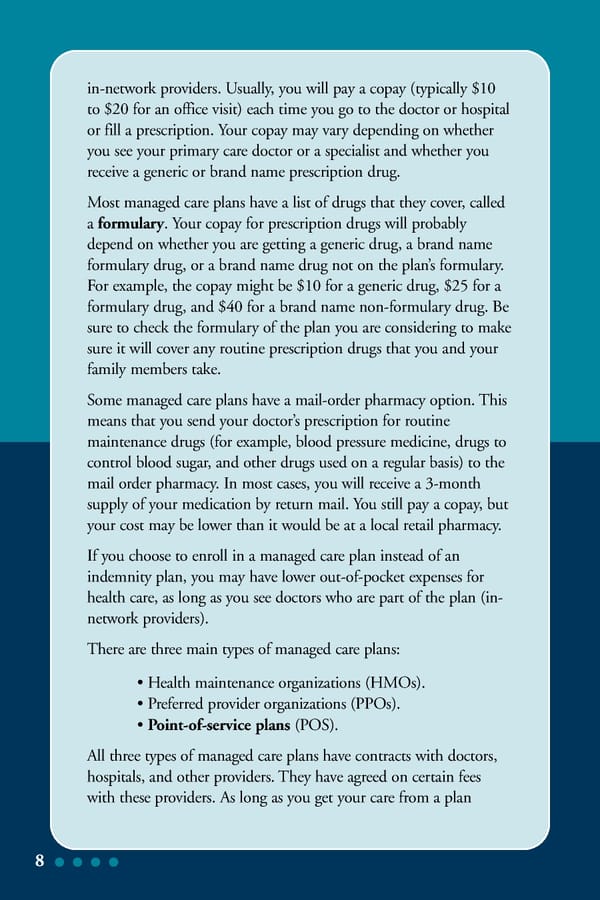in-network providers. Usually, you will pay a copay (typically $10 to $20 for an office visit) each time you go to the doctor or hospital or fill a prescription. Your copay may vary depending on whether you see your primary care doctor or a specialist and whether you receive a generic or brand name prescription drug. Most managed care plans have a list of drugs that they cover, called a formulary. Your copay for prescription drugs will probably depend on whether you are getting a generic drug, a brand name formulary drug, or a brand name drug not on the plan’s formulary. For example, the copay might be $10 for a generic drug, $25 for a formulary drug, and $40 for a brand name non-formulary drug. Be sure to check the formulary of the plan you are considering to make sure it will cover any routine prescription drugs that you and your family members take. Some managed care plans have a mail-order pharmacy option. This means that you send your doctor’s prescription for routine maintenance drugs (for example, blood pressure medicine, drugs to control blood sugar, and other drugs used on a regular basis) to the mail order pharmacy. In most cases, you will receive a 3-month supply of your medication by return mail. You still pay a copay, but your cost may be lower than it would be at a local retail pharmacy. If you choose to enroll in a managed care plan instead of an indemnity plan, you may have lower out-of-pocket expenses for health care, as long as you see doctors who are part of the plan (in- network providers). There are three main types of managed care plans: • Health maintenance organizations (HMOs). • Preferred provider organizations (PPOs). • Point-of-service plans (POS). All three types of managed care plans have contracts with doctors, oviders. They have agreed on certain fees hospitals, and other pr with these providers. As long as you get your care from a plan 8
 Health Insurance Q&A Page 11 Page 13
Health Insurance Q&A Page 11 Page 13